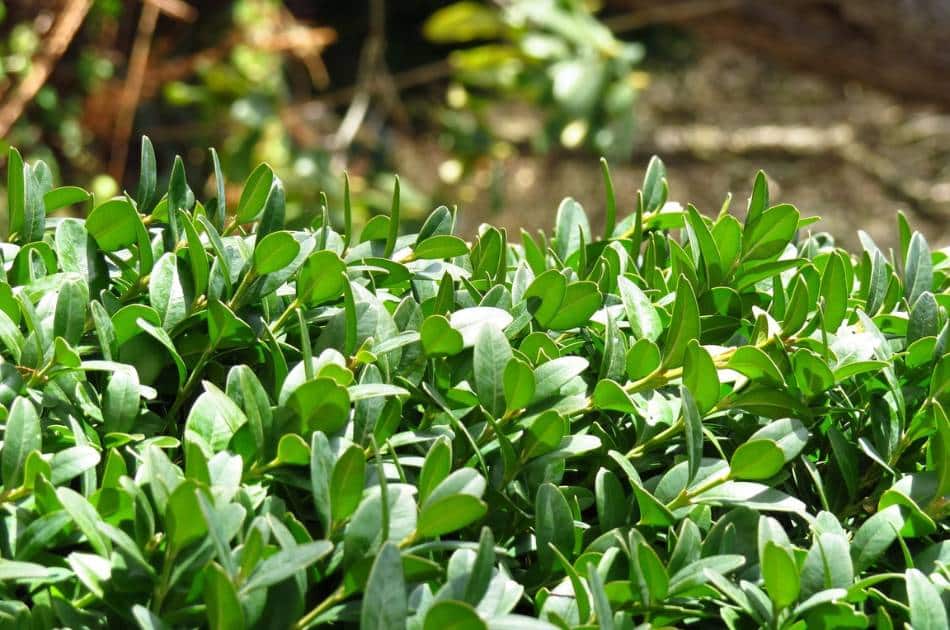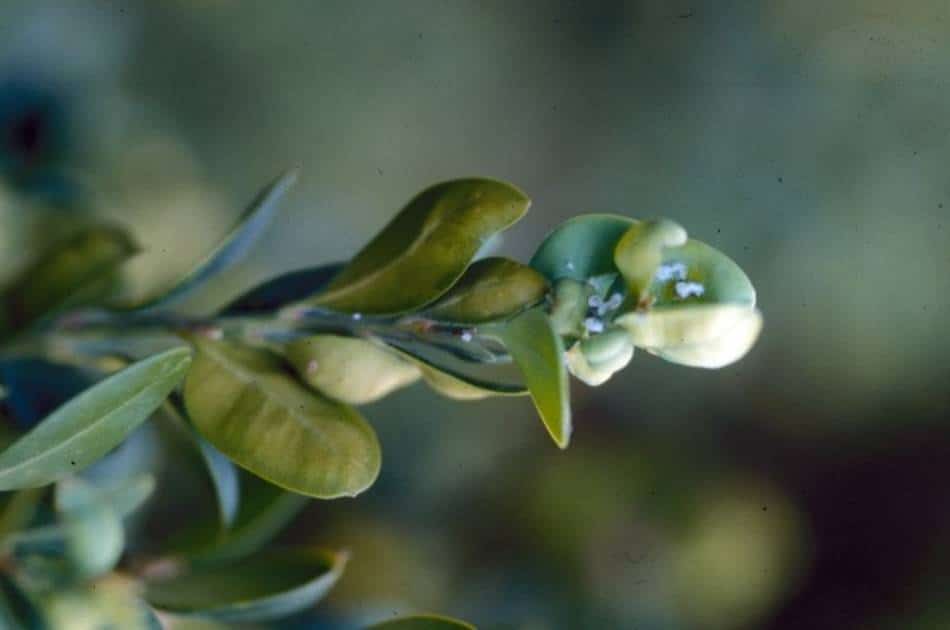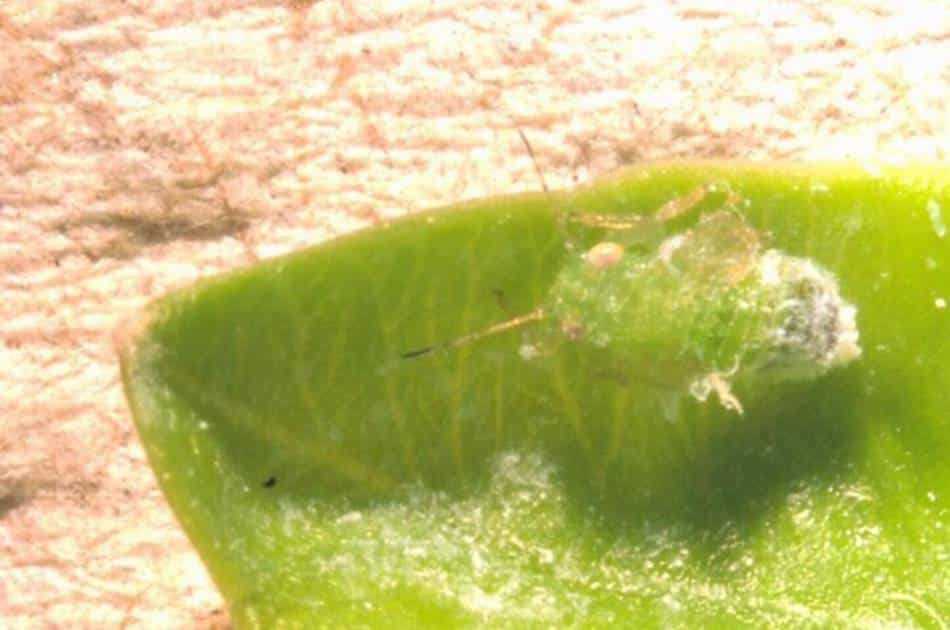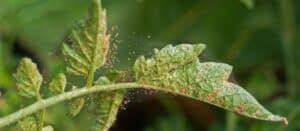Boxwoods are a common New Jersey and Pennsylvania shrub with many enemies, including mites, leafminers, moths, and nematodes. In addition to these pests, your boxwoods are threatened by another foe that’s hitting boxwoods hard this year: boxwood psyllids. And, as summer progresses, they’re making their damage known.
Learn more about this pest, including:
- what the boxwood psyllid is and what it does to plants,
- how to recognize the damage it causes,
- when and where you’re likely to see the boxwood psyllid,
- cultural and biological options to control this insect pest, and
- what you can do if you find yourself with a boxwood psyllid infestation.

What is the Boxwood Psyllid?
The boxwood psyllid (Pyslla buxi) is a common pest in Central New Jersey and Eastern Pennsylvania that damages your boxwoods by piercing and sucking the juice from the plant’s buds and leaves. Originally introduced from Europe, these tiny pests are part of the Psyllidae family and resemble tiny cicadas. Boxwood Psyllids prefer to feed on common boxwood (Buxus sempervirens), but they will feed on nearly any boxwood species.
Boxwood psyllid damage appears as a distinct “cupping” of the leaves. And while the damage isn’t usually fatal, it does cause the boxwoods to lose leaves and can impact the plant’s growth.
The Boxwood Psyllid’s Relationship with Boxwood Plants
Boxwood psyllids have a close relationship with boxwood plants, using them for feeding and depending on them for reproduction.
Boxwood psyllids produce a single generation per year, their eggs overwintering between the boxwood’s bud scales. Light green nymphs emerge from April to May and begin feeding. The cupping of leaves that develops from the feeding provides a hiding place for the nymphs as they mature – protecting them from potential predators. The new generation then lays eggs from June to July, beginning the cycle again.

Upon hatching, small boxwood psyllid nymphs feed on common boxwood leaves and are protected by the resulting “cupping” of the leaves. Photo used courtesy of Daniel Herms, The Ohio State University, Bugwood.org.
What Damage Do Boxwood Psyllids Cause?
You will begin to see the cupping of leaves in the spring as new growth begins and boxwood nymphs begin feeding. These leaves will eventually fall off, resulting in thin foliage.
Though boxwood psyllid damage isn’t as severe as the boxwood leaf miner’s, the damage they cause reduces the boxwood plant’s beauty and can affect the plant’s growth for up to two years after an infestation has been controlled.
How to Treat Boxwood Psyllids
Depending on the degree of infestation, there are various strategies for controlling boxwood psyllids.
Cultural Control of Boxwood Psyllids
While there aren’t many effective cultural controls to fight the boxwood psyllid, there are a couple of recommended techniques:
- Prune your boxwood plants and destroy affected tips before the nymphs emerge in the spring.
- Consider replacing your common boxwoods with English boxwoods (B. sempervirens “Suffruticosa”). This slower growing, shorter B. sempervirens cultivar is thought to be more tolerant of both boxwood psyllids and boxwood leafminers.
Biological Control of Boxwood Psyllids
The boxwood psyllid does have some natural predators in the “true bug” order Hemiptera, but these are generally ineffective for controlling infestations. Unfortunately, there are no identified biological controls for the boxwood psyllid currently.

The tiny boxwood psyllid hatches in the spring and causes significant aesthetic damage to the common boxwood shrub. Photo used courtesy of Nancy Gregory, University of Delaware, Bugwood.org
Chemical Control of Boxwood Psyllids
Chemical interventions are available if you can’t tolerate the aesthetic damage the boxwood psyllid causes.
Horticultural Oils & Insecticidal Soaps to Control Boxwood Psyllids
Some boxwood psyllid infestations can be controlled with a horticultural oil, such as neem oil, or with an insecticidal soap. However, since the pest is typically identified after leaf damage has occurred, this won’t prevent it from affecting the plant’s appearance.
If you’ve seen psyllid damage to your boxwoods this year, we recommend adding an early horticultural oil application to next year’s pest management plan.
These oils and soaps work by clogging the psyllid’s spiracles (the breathing holes that line their abdomen). To effectively treat the pests, it’s important to completely cover both the top and undersides of all leaves, as well as stems and branches, with horticultural oil or insecticidal soap. If you don’t have the proper equipment to do that, it’s best to call in an experienced plant healthcare provider like Organic Plant Care who can do the job quickly and thoroughly.
Other Pesticides to Control Boxwood Psyllids
There are several chemical pesticides labeled for use against boxwood psyllids, but these pesticides are typically only recommended for especially severe infestations.
If you prefer an organic approach to treating your boxwoods, check the OMRI list of organic pesticides to see which are recommended for this purpose. Or call Organic Plant Care at 908-386-4576; we prioritize an organic approach to plant pest management and can most likely take care of your boxwood psyllid problem without using toxic, synthetic pesticides.
Want Help Keeping Your Boxwoods Healthy?
Organic Plant Care can help control boxwood psyllids! We offer organic pest treatments for your landscape, trees, and shrubs – boxwoods included! We emphasize working with the environment, rather than against it, to help keep plants healthy and people and pets safe.
Let us help maintain the safety, value, and beauty of your shrubs, ornamental trees, and landscape with organic fertilization, expert pruning, and effective pest and disease management.
GET THE LATEST NEWS
Subscribe to the Organic Plant Care Newsletter and get timely and helpful tips and updates monthly.
There's no spam - we promise!





